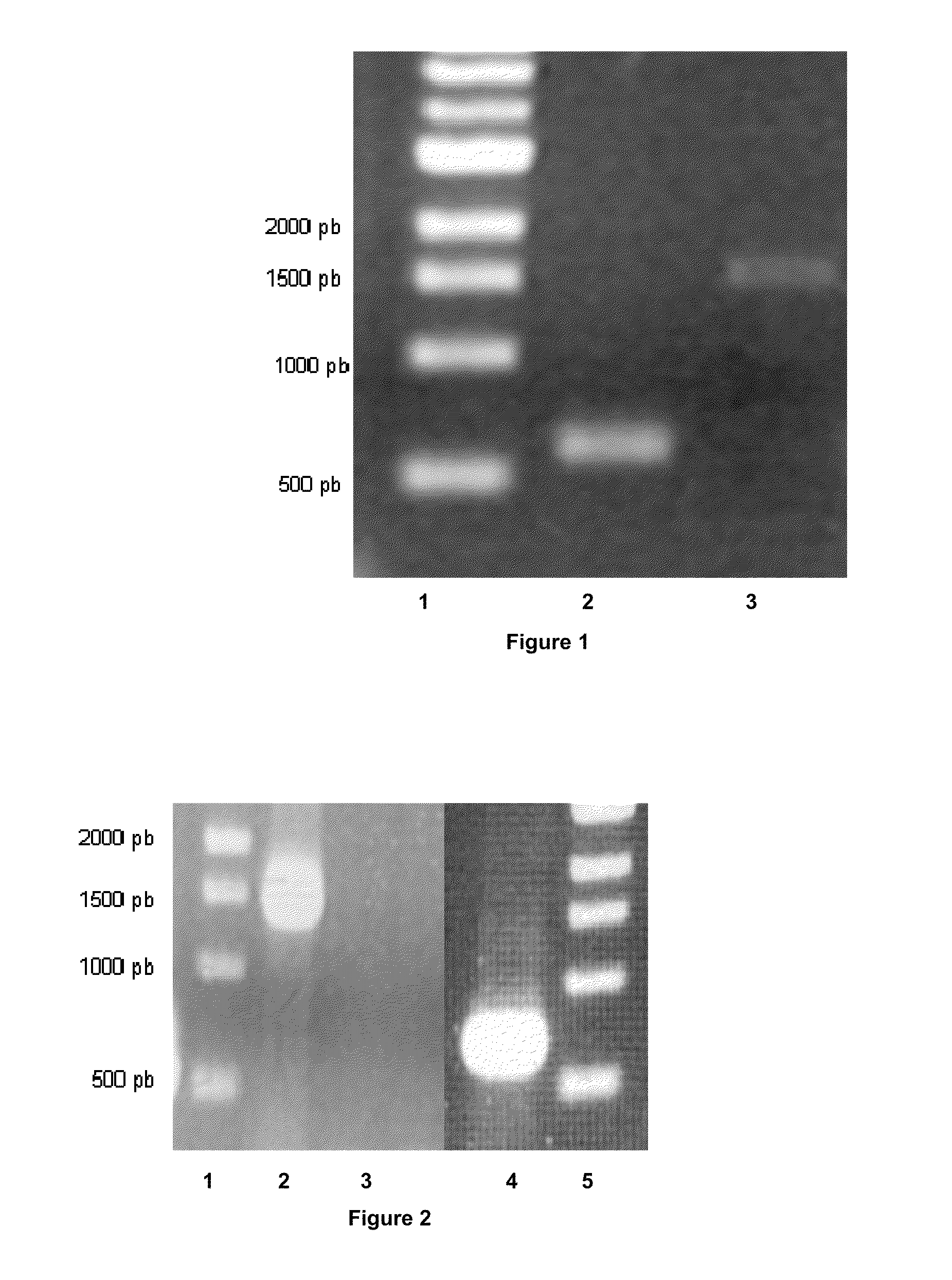Process for the biological production of n-butanol with high yield
a biological production and high yield technology, applied in biofuels, microbiology, microorganism introduction, etc., can solve the problems of no longer being economical limitations to the process by low solvent titers, and achieve stable process for production, high yield, and low flux of hydrogen production
- Summary
- Abstract
- Description
- Claims
- Application Information
AI Technical Summary
Benefits of technology
Problems solved by technology
Method used
Image
Examples
example 1
Construction of the pCONS::upp-intron Vector
[0050]This plasmid contains a pIM13 origin of replication functional in Clostridia, a catP gene conferring resistance to thiamphenicol, the upp gene and LtrA ORF required for functional expression of the group II intron RNP. In order to construct the pCONS-intron vector, we sub-cloned the sequence of the LtrA ORF into the pCONS::upp vector. The LtrA ORF region was obtained from restriction digestion of pACD4 vector (Sigma TargeTron) with XbaI and PshAI. The pSOS95 vector was digested with BamHI and SfoI blunt ended to remove the acetone formation genes while leaving the thiolase promoter region. The LtrA ORF digest product and the linearized pSOS95 vector were ligated to create the pSOS-intron vector. The pSOS-intron vector was digested by NsiI and SapI to remove the thiolase promoter and LtrA ORF. The pCONS::upp was digested with SapI and blunt ended. These fragments were ligated together to generate the pCONS::upp-intron vector.
example 2
Construction of the pCONS::upp-intron ack Sense and pCONS::upp-intron ack Antisense Vectors
[0051]To inactivate the ack gene, a strain with the insertion of sense or antisense intron II in the ack gene was constructed as follows. First, a computer algorithm was used to identify target sites in the ack gene. Second, the computer algorithm outputs primer sequences (Table 1) which are used to mutate (re-target) the ack sense intron by PCR with the primers ACK 1, ACK 2, ACK 3 and the EBS universal primer or the ack antisense intron by PCR with the primers ACK 4, ACK 5, ACK 6 and the EBS universal primer. Next, the mutated 350 pb PCR fragment ack sense or antisense intron and the pCONS::upp-intron vector were digested by BsrGI and HindIII and then ligated to yield the pCONS::upp-intron ack sense or the pCONS::upp-intron ack antisense.
TABLE 1primers sequencesNamePrimer sequencesACK 1SEQ ID No 1AAAAAAGCTTATAATTATCCTTAGTACTCG(IBS)CTAAAGTGCGCCCAGATAGGGTGACK 2SEQ ID No 2CAGATTGTACAAATGTGGTGATA...
example 3
Construction of the pCONS::upp-intron pta Sense and pCONS::upp-intron pta Antisense Vectors
[0052]To inactivate the pta gene, a strain with the insertion of sense or antisense intron II in the pta gene was constructed as follows. First, a computer algorithm was used to identify target sites in the pta gene. Second, the computer algorithm outputs primer sequences (Table 2) which are used to mutate (re-target) the pta sense intron by PCR with the primers PTA 1, PTA 2, PTA 3 and the EBS universal primer or the pta antisense intron by PCR with the primers PTA 4, PTA 5, PTA 6 and the EBS universal primer. Next, the mutated 350 pb PCR fragment pta sense or antisense intron and the pCONS::upp-intron vector were digested by BsrGI and HindIII and then ligated to yield the pCONS::upp-intron pta sense or the pCONS::upp-intron pta antisense.
TABLE 2primers sequencesNamePrimer sequencesPTA 1SEQ ID No 7AAAAAAGCTTATAATTATCCTTAGAAGAC(IBS)AAAAGAGTGCGCCCAGATAGGGTGPTA 2SEQ ID No 8CAGATTGTACAAATGTGGTGATA...
PUM
 Login to View More
Login to View More Abstract
Description
Claims
Application Information
 Login to View More
Login to View More - R&D
- Intellectual Property
- Life Sciences
- Materials
- Tech Scout
- Unparalleled Data Quality
- Higher Quality Content
- 60% Fewer Hallucinations
Browse by: Latest US Patents, China's latest patents, Technical Efficacy Thesaurus, Application Domain, Technology Topic, Popular Technical Reports.
© 2025 PatSnap. All rights reserved.Legal|Privacy policy|Modern Slavery Act Transparency Statement|Sitemap|About US| Contact US: help@patsnap.com



